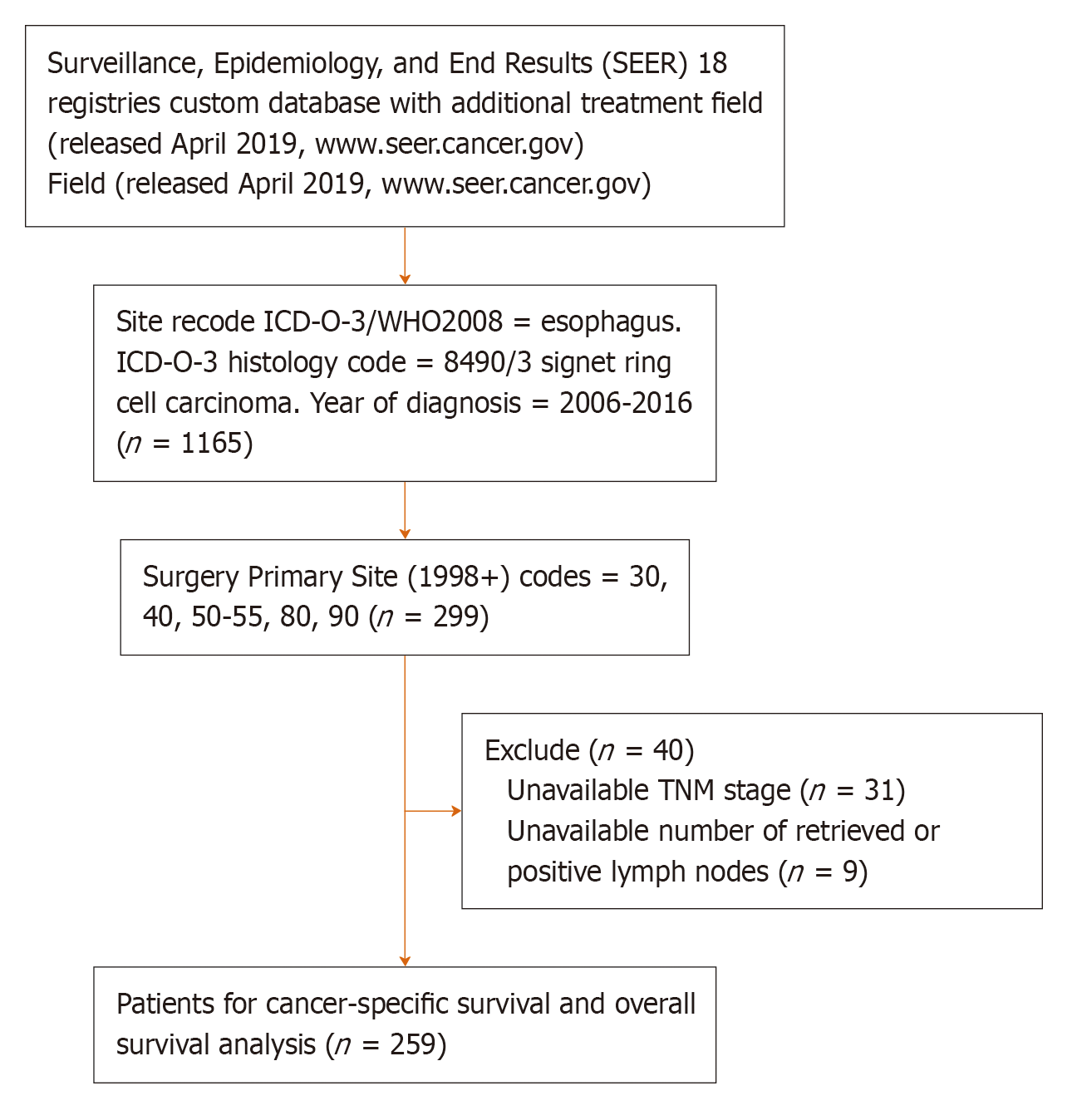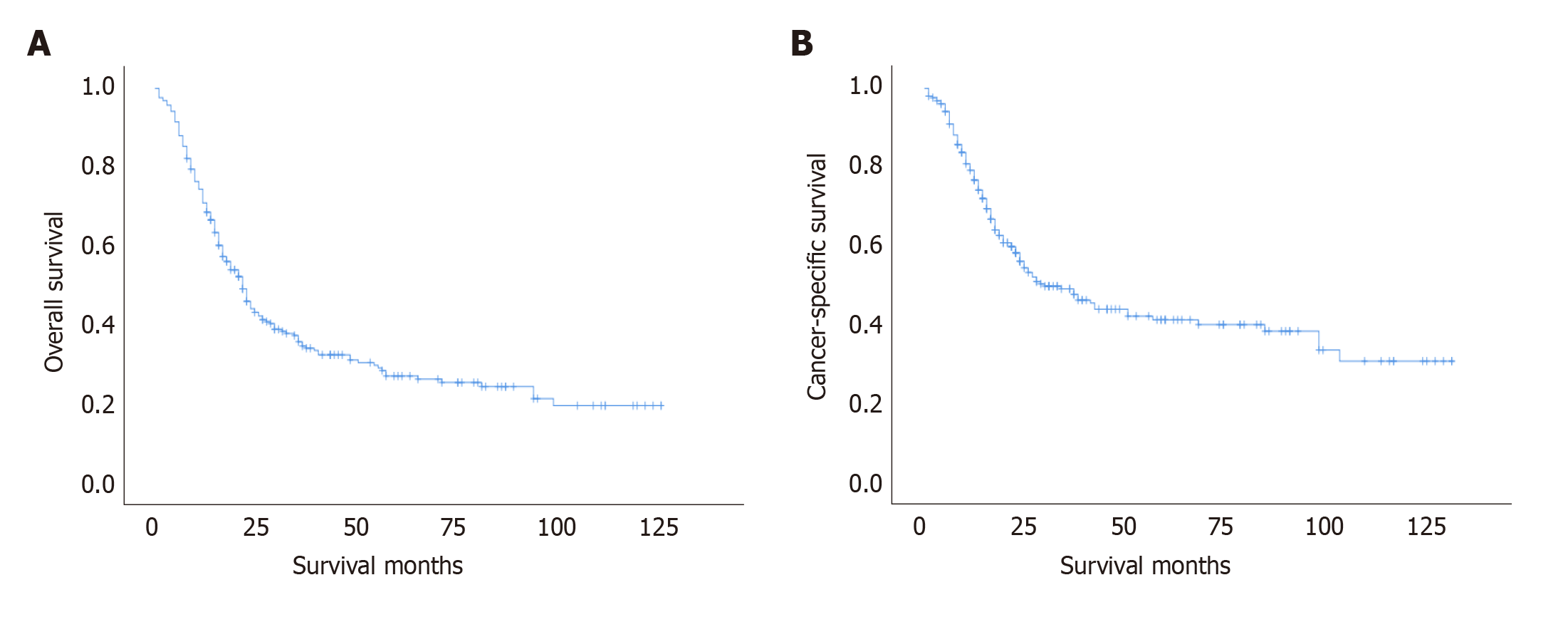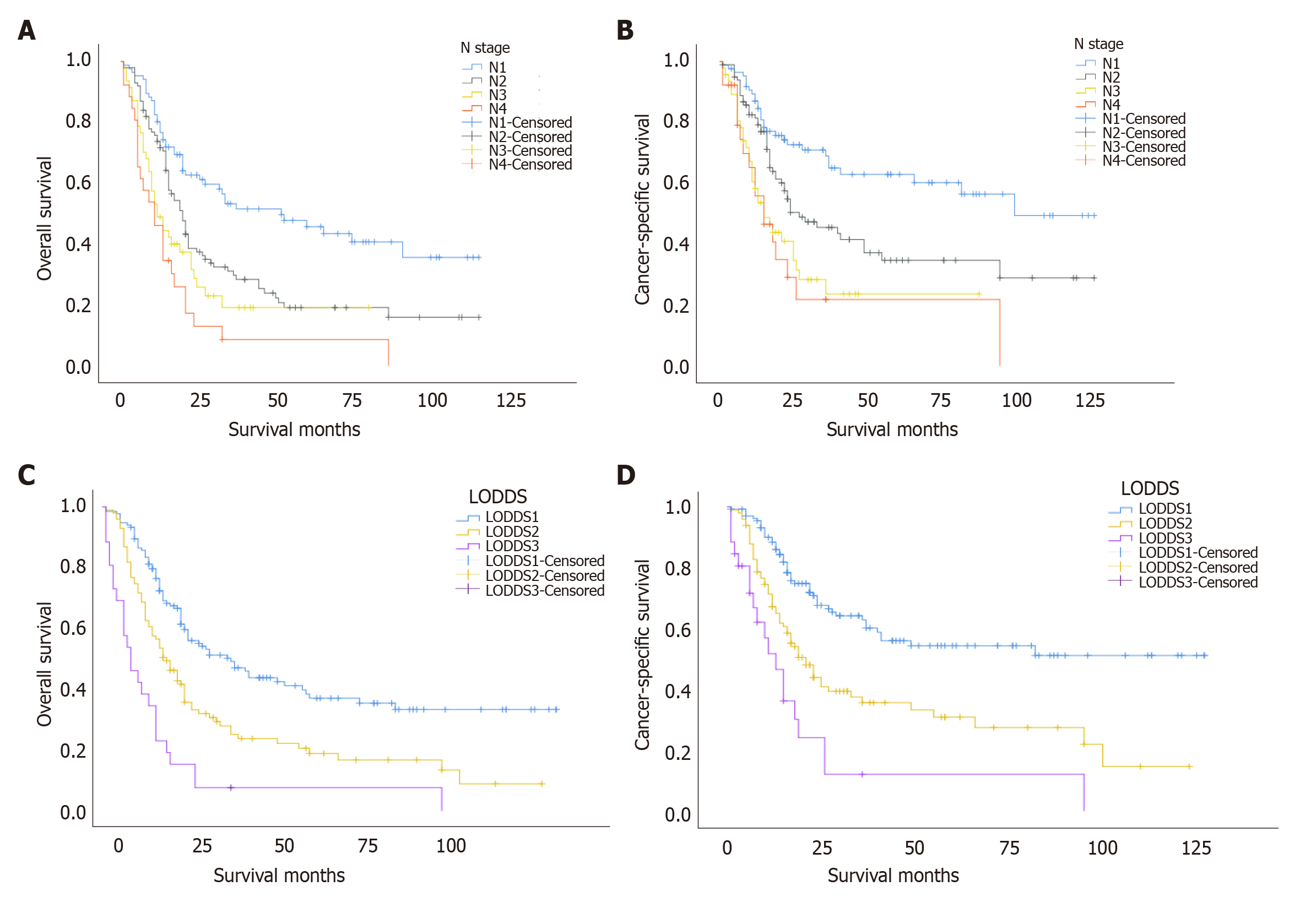Copyright
©The Author(s) 2020.
World J Clin Cases. Jan 6, 2021; 9(1): 24-35
Published online Jan 6, 2021. doi: 10.12998/wjcc.v9.i1.24
Published online Jan 6, 2021. doi: 10.12998/wjcc.v9.i1.24
Figure 1 Study flow diagram of selection process.
ICD-O-3: The third edition of the International Classification Disease for Oncology; WHO: World Health Organization.
Figure 2 Calculated by the Kaplan-Meier method, the 5-year overall survival and 5-year cancer-specific survival rates were 27.
0% and 41.3%, respectively. Kaplan-Meier survival curves of overall survival (A) and cancer-specific survival (B) for esophageal signet ring carcinoma patients after surgical resection.
Figure 3 Kaplan-Meier survival curves drawn with N stage and log odds of positive lymph nodes categories as univariates.
Kaplan-Meier survival curves of overall survival stratified by N stage (A) and log odds of positive lymph nodes category (C) and cancer-specific survival stratified by N stage (B) and log odds of positive lymph nodes category (D) for esophageal signet ring carcinoma patients after surgical resection. LODDS: Log odds of positive lymph nodes.
Figure 4 Kaplan-Meier survival curves of overall survival curves with N stage and log odds of positive lymph nodes categories as univariates in the validation cohort.
Kaplan-Meier survival curves of overall survival stratified by log odds of positive lymph nodes category (A) and N stage (B) in the validation cohort. LODDS: Log odds of positive lymph nodes.
- Citation: Wang F, Gao SG, Xue Q, Tan FW, Gao YS, Mao YS, Wang DL, Zhao J, Li Y, Yu XY, Cheng H, Zhao CG, Mu JW. Log odds of positive lymph nodes is a better prognostic factor for oesophageal signet ring cell carcinoma than N stage. World J Clin Cases 2021; 9(1): 24-35
- URL: https://www.wjgnet.com/2307-8960/full/v9/i1/24.htm
- DOI: https://dx.doi.org/10.12998/wjcc.v9.i1.24












